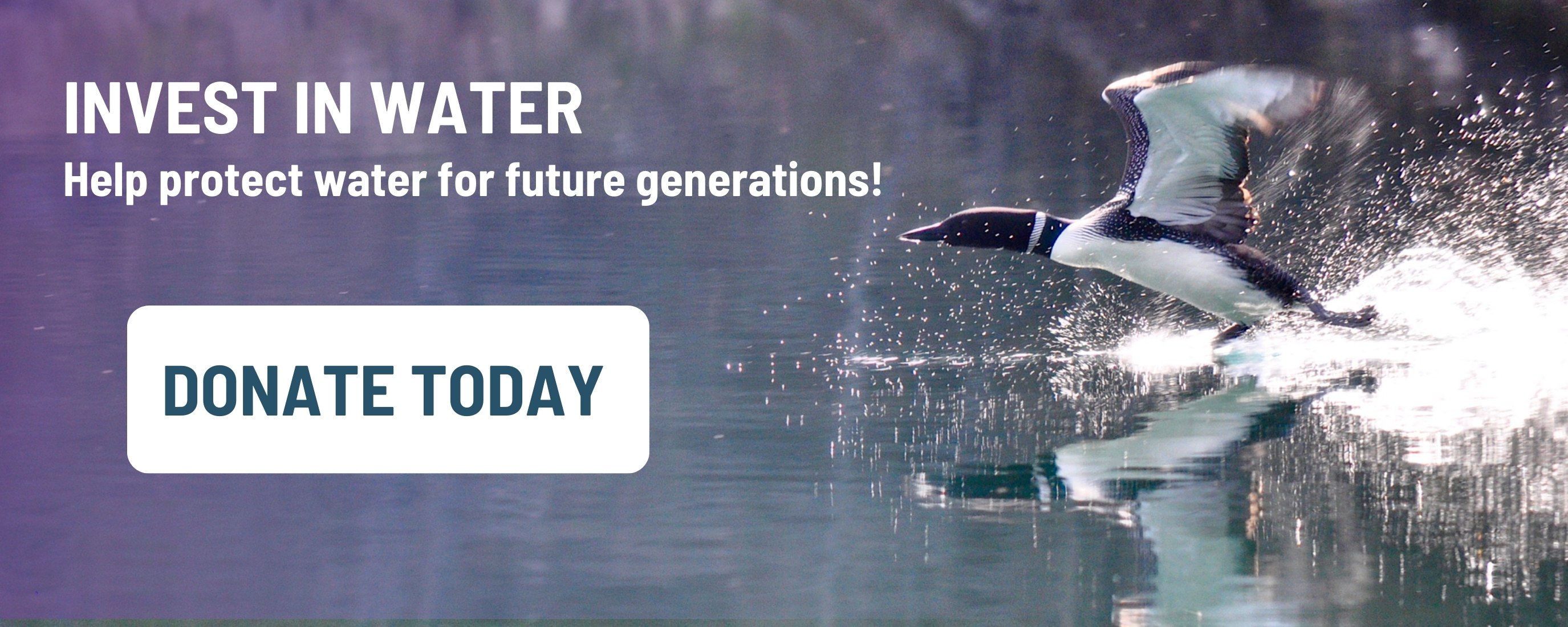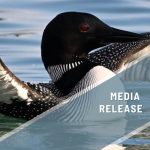Transforming streams into stories 🌊
Banner photo courtesy of Leslie Mehner, 2023 Lake Biodiversity Photo Challenge.
Recent images from the Canadian Space Agency provide a rare perspective on drought impacts in British Columbia. Rivers that were full with spring meltwater around this time last year are now reduced to narrow paths weaving around exposed riverbeds.
The Prairies, Northwest Territory, northern Ontario and other parts of Canada are also experiencing drought conditions. At the same time, the early start to the wildlife season has sent smoke pluming across parts of Canada and the United States with communities already facing evacuation alerts and orders.
Taking action to mitigate the effects of climate change can bring hope in these challenging times. This month’s newsletter explores water data insights and visualizations and the need for enhanced monitoring, plus we invite you to celebrate your favourite watersheds and voice your groundwater concerns.

College students transform water data into stories
At Niagara College in southern Ontario, 32 students plunged into the Columbia Basin Water Hub to transform data into visually engaging environmental stories.
Two students were selected as winners for their outstanding data visualization efforts.
Data visualization is emerging as a powerful tool for communicating trends and patterns, raising awareness of environmental issues and, in the case of this project, enhancing the students’ understanding of the critical role that environmental data plays in climate adaptation.

Canadian water innovation featured in renowned international journal
Living Lakes Canada’s Columbia Basin Water Monitoring Framework was selected as a featured case study for a recent special issue of Water International journal focused on water governance.The article details the framework’s pioneering approach as a localized solution for water management challenges, with its emphasis on Indigenous and non-Indigenous community engagement and prioritized monitoring based on combined scientific and community criteria.
“In response to rapidly shifting baselines and significant water data gaps, the Columbia Basin Water Monitoring Framework is a paradigm-shifting model that is charting a course for adaptive watershed management,” said Kat Hartwig, Executive Director of Living Lakes Canada.

Get ready to submit your favourite lake and biodiversity photos
What do photos of sunsets, kayakers, herons and plastic pollution all have in common? They’re all eligible to be submitted to the 4th annual Lake Biodiversity Photo Challenge!
From June 1 to July 31, we invite you to submit your favourite lake photos to one of four categories for the chance to win prizes, including the new grand prize of an online photography workshop with professional photographer Viktoria Haack, Nikon Canada Ambassador and Kase Filters Global Ambassador!
Also new for this year: we’re partnering with the Canadian Conservation Photographers Collective, and aligning with their Code of Ethics for Nature Photography to help mitigate negative impacts on the lakes we all love.

Voice your concerns about groundwater in the Columbia Basin
Groundwater in the Columbia Basin is a crucial freshwater source for domestic, agricultural, industrial, and commercial purposes. However, a lack of understanding of groundwater systems is a problem that can hinder sustainable water management and allocation.
If you’re a resident of the transboundary Columbia Basin, and concerned about how recent drought conditions are affecting groundwater in the region, please voice your concerns by completing our survey. Your help will build momentum for an aquifer assessment in the Columbia Basin region.

Our Current Reads
Opinion: B.C. needs local watershed boards to avoid water wars – Vancouver Sun
Buying and selling water is a reality in Alberta — sometimes for big money – CBC News
Venezuela becomes first country to lose all of its glaciers – United Press International
For First Nations in Alberta, drought only compounds existing water issues – CBC News
Watersheds in BC are at a heightened risk – Partnership for Water Sustainability in BC










